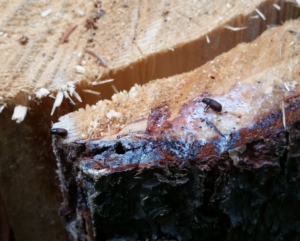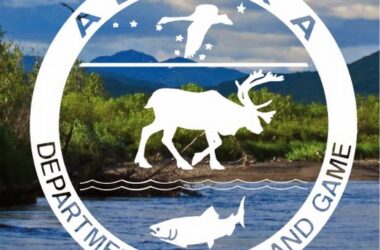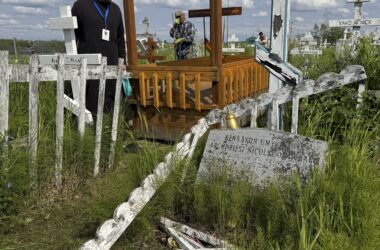 Every year in Alaska the threat of forest fires loom large. Already this year, in a summer initially marked by record low fire numbers, blazes in the interior have decimated more than 10,000 acres of forest, prompted evacuation notices, park and trail closures, and have caused a cascade of rescheduled and/or cancelled state and community events. Last year, more than 3 million acres of woodland burned. One of the primary fuel sources for these annual infernos? Spruce bark beetles.
Every year in Alaska the threat of forest fires loom large. Already this year, in a summer initially marked by record low fire numbers, blazes in the interior have decimated more than 10,000 acres of forest, prompted evacuation notices, park and trail closures, and have caused a cascade of rescheduled and/or cancelled state and community events. Last year, more than 3 million acres of woodland burned. One of the primary fuel sources for these annual infernos? Spruce bark beetles.
How big of a problem do the “beetle-kill” trees present? Be enough that the Kenai Peninsula Borough Assembly approved an Ordinance at the meeting on August 15th, officially accepting $1.5 million to take down trees killed by spruce bark beetles along borough roads.
And yet, there is a silver lining to the woodland death and extensive list of hazards wrought by these beetles. Just ask Marcus Mueller, Land Management Officer for the Kenai Peninsula Borough.
“The beetle situation is a double-edged sword, so there’s definitely these hazards of trees falling on something, power lines, across driveways, on your car, on your shed, on your house roof. But then also there’s a whole other side to it too. One of the bright spots is that the sun is gonna hit the ground in new spots and create places for new flowers and berries to grow, as well as the opportunities to get firewood. Some of the trees are good for sawmilling, and so we’re seeing an uptick in local milled products which are great for building. There’s some of the some really good materials that are available from local suppliers.”
Beyond the economical silver linings, there are natural benefits in the form of ecosystem equilibrium. What is that? Think of a year when you’ve seen more mosquitoes than you ever thought possible, or a year when you’ve seen a lot of rabbits around, then the next year you don’t. Glorious as it may be to have a year with less mosquitoes, or sad as it may be not to have as many cute and fluffy bunnies around, these are signs of a healthy ecosystem that is in equilibrium. A rise in prey numbers one year, leads to a rise in predator number the next. If the equilibrium ever falls out of balance, it means something has gone wrong and a portion of the eco-structure is missing, which is indicative of looming environmental problems.
Which goes back to the spruce bark beetle. Mueller touched on this equilibrium when he mentioned more sunlight on the forest floor. “We’re gonna have a period where the forest becomes kind of young again,” Mueller says, expanding on the ecosystem benefits, “full of flowers and berries, full of Birch and Aspen, and then the second crop of spruce is going to come in behind it too. So, we’re gonna have a mixed forest.”
And as we see the increasing number of trees turning that familiar shade of gray, Mueller reminds us not only of the potential natural benefits we will see in the future, but what role we have to play in caring for the wooded areas near our homes, and to protect ourselves from the potential hazards. “There’s all of these mature spruce trees that have died or are in dying state, and one thing that we know is that those trees are going to fall down, whether they’re assisted by skilled chainsaw operators or whether we let them go with the wind those winds snapped or wind throwing trees. Do you really present a hazard for property owners and folks should really consider getting those taken care of as soon as they can.”
“We’re gonna see a lot of changes,” Mueller says. “In some places we should be really cognizant of how those changes are gonna affect us, and what we can do to take care of the spaces that we’re responsible for.”






